When Do Cavapoos Lose Their Teeth? [28 Puppy Teeth Guide]
You already know that your Cavapoo has human-like qualities when it comes to their lovability, but did you know that they also lose baby teeth as we do? When do Cavapoos lose their teeth?
Cavapoo teeth begin to fall out when a puppy is around 12 weeks old. Their baby canines stay in longer, falling as late as six months old.
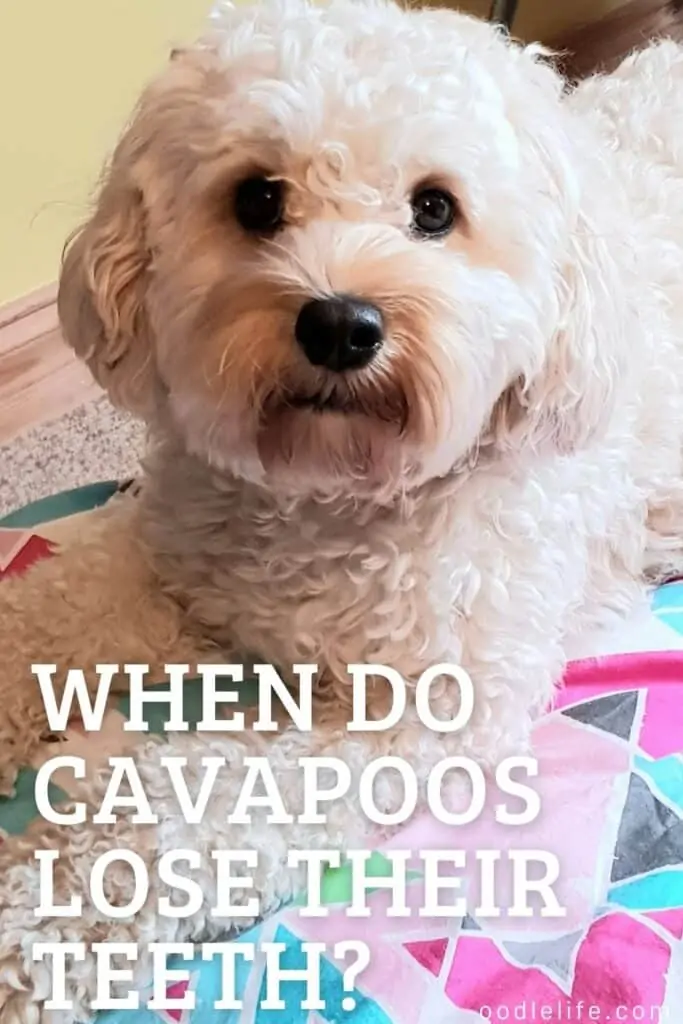
By the time your Cavapoo is six to eight months old, it’ll no longer have its 28 baby teeth and instead have 42 pearly white adult ones.
However, as your furniture may know, there’s a lot more to Cavapoo teething than simply losing its baby teeth. I’ll cover the essential information you need to know about the teething process and how to keep your pup comfortable during the transition.
Teething Timelines
You’ll notice that your Cavapoo puppy begins developing baby teeth when it’s two to three weeks old. As it grows and gets playful, your hand will likely fall victim to your puppy’s innocent play bites, where you’ll have the chance to feel just how sharp its teeth are.
Your puppy won’t keep its baby teeth for long, though; by 12 weeks old, its teeth will begin falling out. Like in human babies, this can be a painful time for puppies (can result in barking or bad behavior). Therefore, you should provide your Cavapoo with plenty of chew toys.
If you want to keep one of your Cavapoo’s baby teeth, you’ll need to cross your fingers and keep a good lookout-puppies often swallow them, hiding all evidence except the adult tooth that replaces it.
Tooth Stages
The stages of a Cavapoo’s puppy tooth/milk teeth cycle are like that of any other dog but learning about it may give you more appreciation as your puppy undergoes the process. One of the most important things to know is that not all teeth grow at the same time.
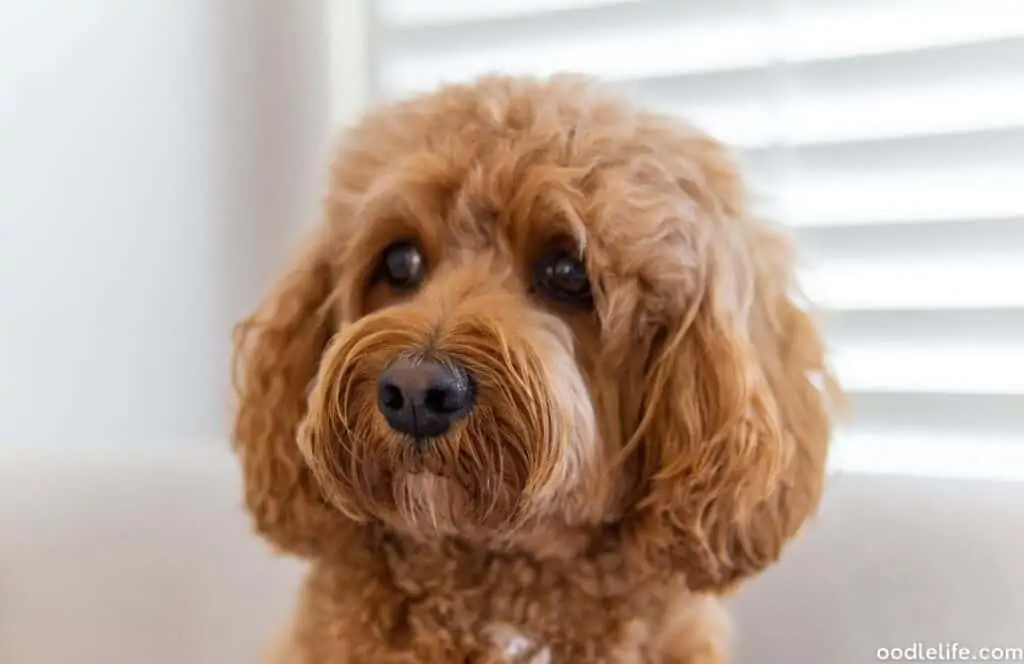
Instead, the incisors, located at the front of the mouth, grow first. As a result, these are usually the first to fall out when adult teeth grow in. Your Cavapoo will have 12 incisors total-six on the top and six on the bottom.
The canine teeth come next, which have a fang-like appearance. Finally, the premolars will show up. Since puppies rely primarily on their mom’s milk, don’t panic when you don’t see your Cavapoo’s baby molars-they don’t grow any. They are not a part of puppy teething.
How to Keep Your Cavapoo Comfortable During Teething?
The best thing you can do when you’re raising a Cavapoo puppy is to have compassion during the teething stage. It may seem like they’re simply playful when they chew on things they’re not supposed to, but know that it’s to help them relieve the pain and pressure that teething causes.
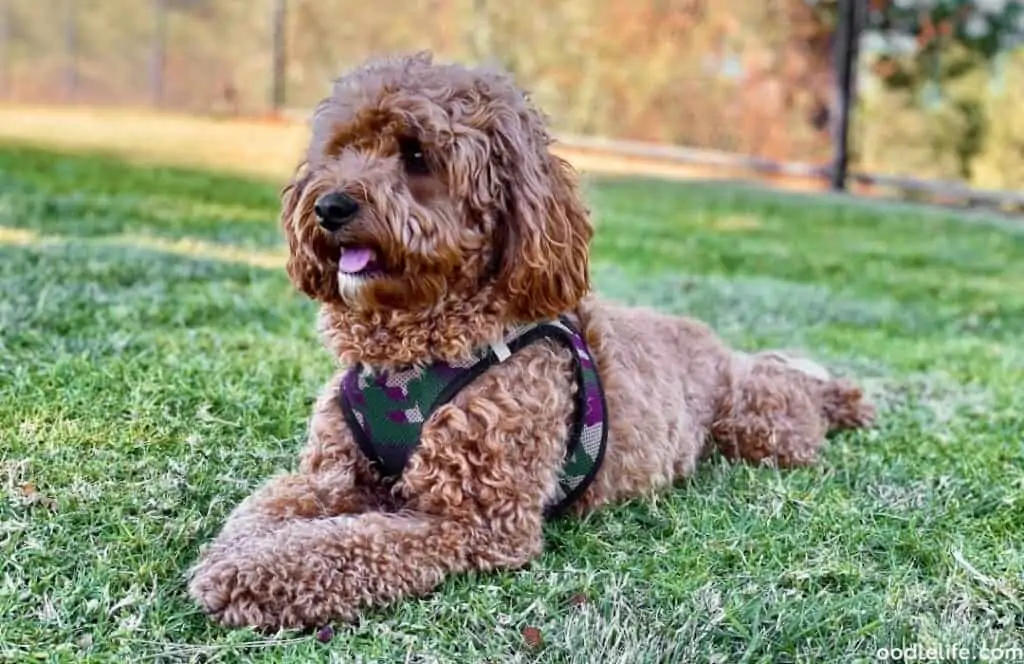
As a result, you’ll want to give your Cavapoo breed pup plenty of durable toys it can chew on. At the same time, make sure to puppy-proof your house by keeping cords and other potentially dangerous objects out of the reach of your pup’s mouth.
Frozen carrots or a frozen stuffed Kong can also be soothing and ease discomfort.
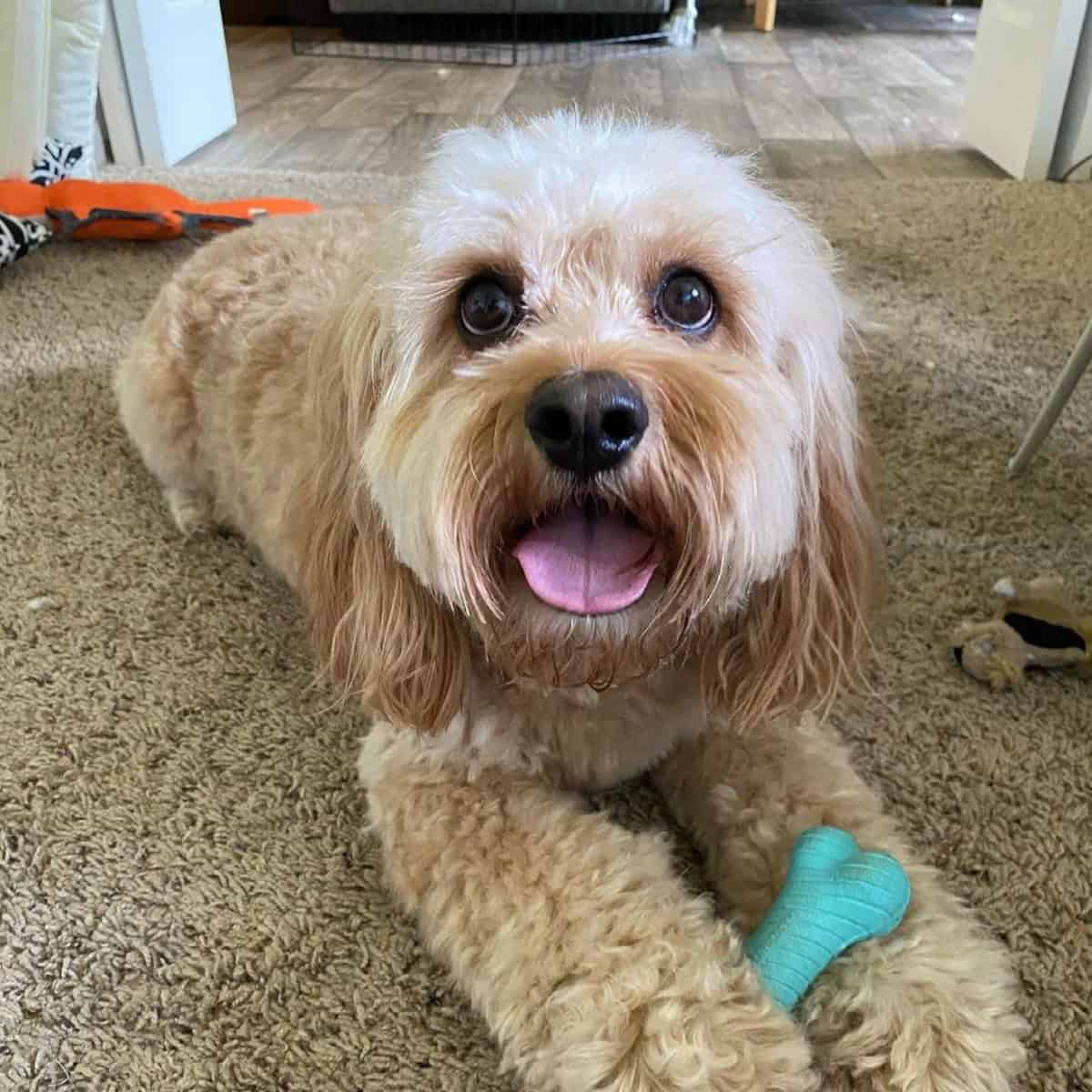
Although adult teeth usually grow in by eight months of age, they can sometimes take longer. Nevertheless, some Cavapoos may get in the habit of continuing to chew on items in your home after they finish teething if you didn’t set boundaries when they were younger.
For this reason, it’s critical that you give your Cavapoo lots of toys and use positive reinforcement techniques when they chew on them.
Help! My Cavapoo’s Teeth Aren’t Falling Out
Mother nature is impressive, but she sometimes goes wrong. If you notice an adult tooth trying to grow from beneath a baby tooth that doesn’t want to fall, it’s okay to give it a little help. Try wiggling the baby tooth with your hand or playing tug of war with your dog in the backyard.
If the tooth remains lodged into place, then it might be time to call the vet. Although it may not seem like a big problem at the moment, if an adult tooth grows in without the baby tooth dropping, it can force the teeth in your dog’s mouth to shift. (We catalogue on the YouTube channel our dog Max’s experience with teeth that did not fall out).
As a result, your dog may spend a lifetime having trouble chewing and playing. A change in tooth alignment can even cause excess tartar to build up.
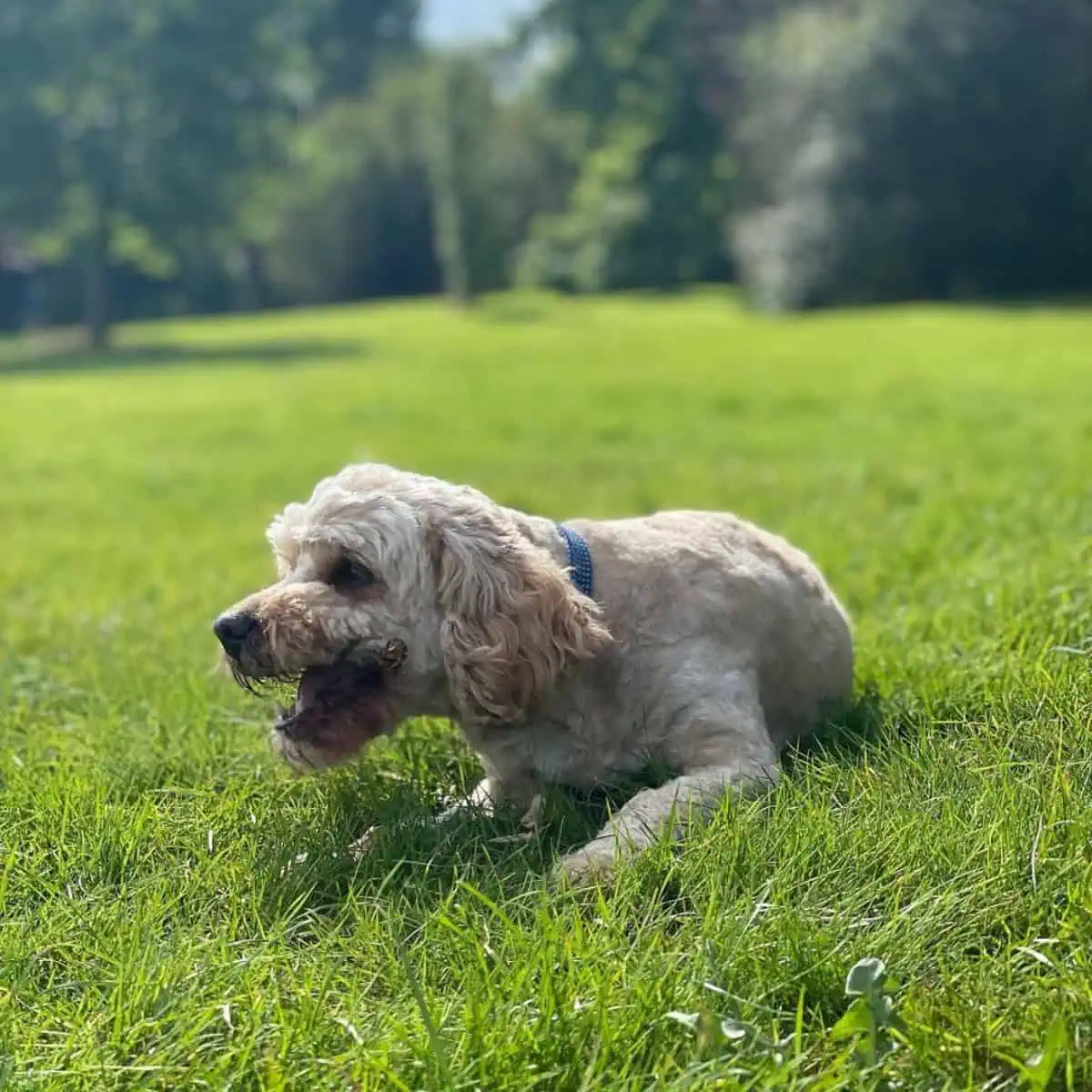
Here’s some good news, though-it isn’t common for a Cavapoo dog to have issues with losing their baby teeth. That said, if you’ve ever spoken with a pug or bulldog owner, you may know that these dogs frequently struggle with dropping teeth because of the shape of their faces.
Tips for Caring for Cavapoo Baby Teeth
Although Cavapoos don’t usually need human intervention to develop and drop their baby teeth, there are things you can do to make the experience easier on them. Below are some of my top recommendations.
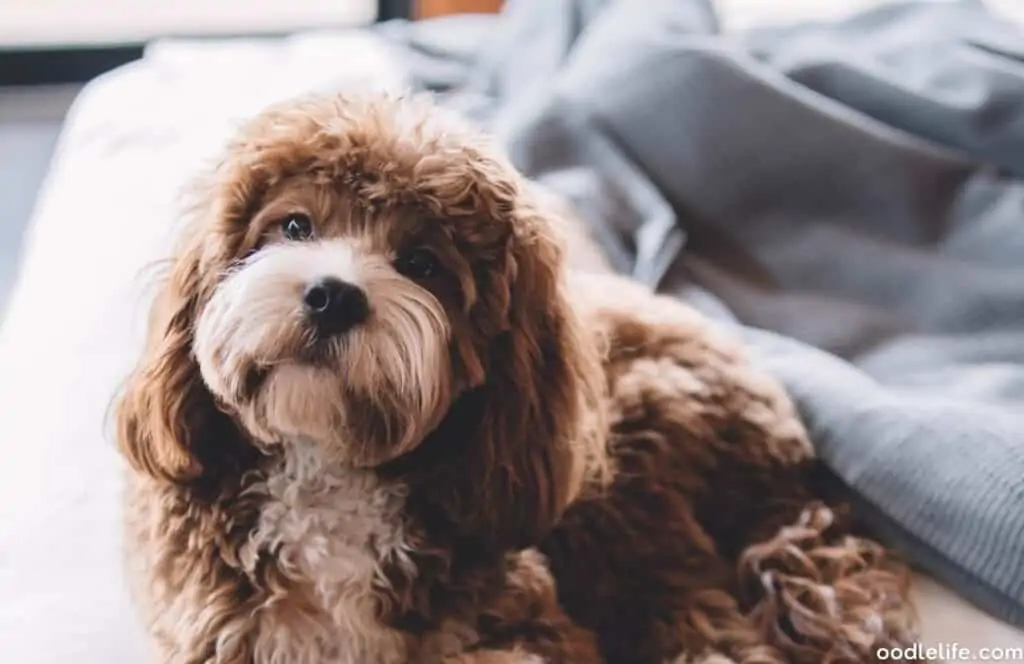
- Chew Toys: Kongs and rope tug toys are excellent options since they’re durable. Your dog’s teeth may even get stuck in the rope for a little keepsake!
- Playtime: One of the best ways to encourage baby teeth to fall is by giving your dog lots of playtimes. Tug of war is one of the most effective games for teeth droppings.
- Monitor its mouth: Check your puppy’s mouth for swelling and other oral issues. As an added benefit, your dog will become used to you handling its mouth.
- Visit the vet: Routine visits to the vet are essential, and your veterinarian will perform a dental exam.
- Brush its teeth: Dogs need their teeth brushed too, and you can use dog-approved toothpaste to do so. The earlier you start this, the easier it will be as they grow into adulthood.
- Positive reinforcement: Choose a sound to make when your dog chews on something you don’t want it to. By pairing that sound with a treat when it stops, it’ll quickly learn to listen to the noise.
Dental Issues in Cavapoos
Certain breeds run a higher risk of having dental problems. Although dental issues as a puppy aren’t common in Cavapoos, once they reach adulthood, the problems can, unfortunately, set in.
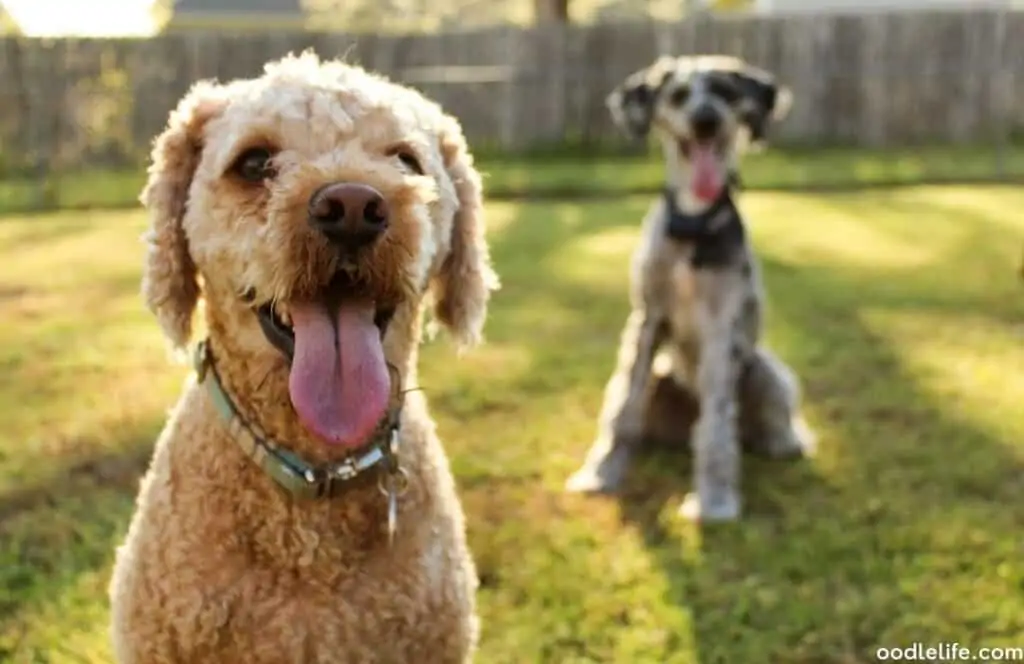
Why? It is because they are a mixed breed and the Poodle parent has some predisposition.
Given the Cavapoo’s King Charles Cavalier Spaniel and Poodle background, it has a high chance of getting plaque and tartar build-up as an adult. Much of this has to do with your Cavapoo having such a small mouth.
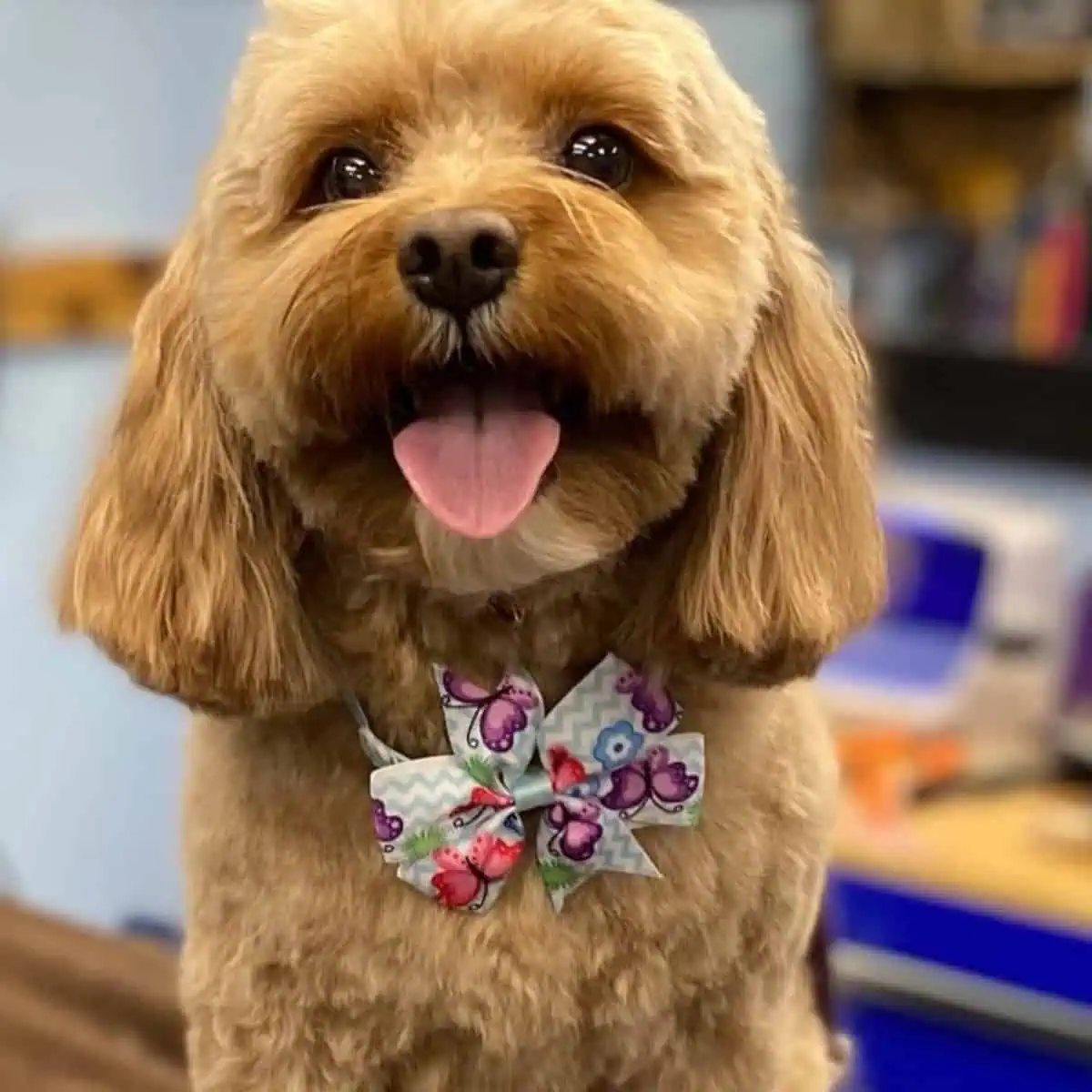
If plaque and tartar remain on your Cavapoo’s teeth for too long, it can turn into a painful (and expensive) gum infection.
The good news is that you can take your dog to the vet for dental cleanings. By spending the time and money to do so upfront, you could save yourself a much bigger vet bill-and keep your Cavapoo from a painful experience-in the future.
Ready to Raise a Cavapoo Puppy?
Having a Cavapoo puppy in the house is a rewarding experience if you can get past its nature-driven desire to chew on everything it sees. The important takeaway here is that when your Cavapoo chews on your furniture and ankles, it’s doing it to relieve pain from teething.
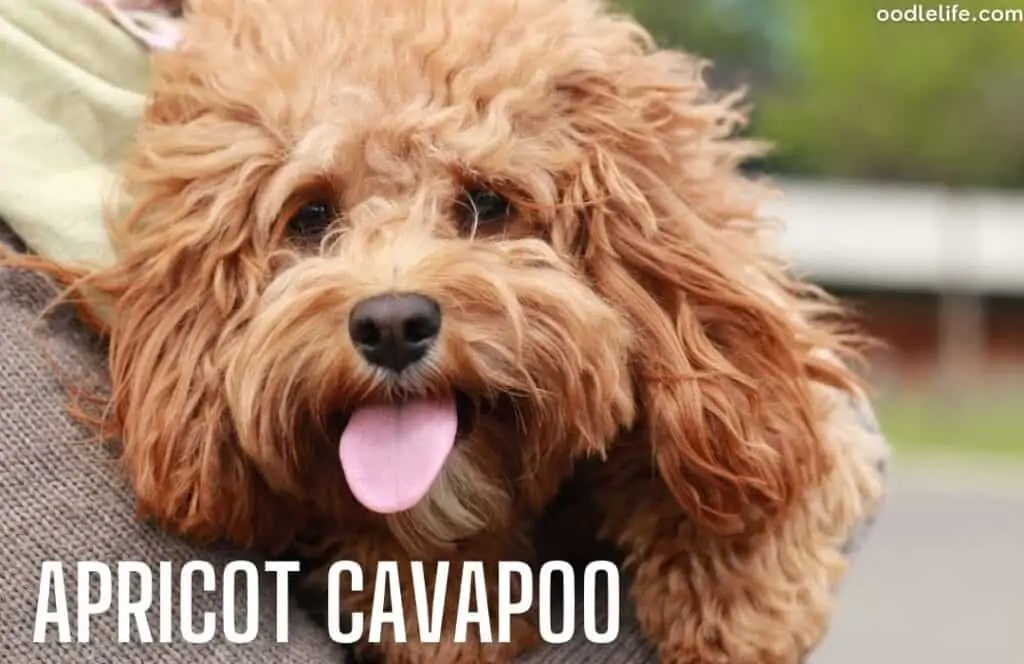
Puppy biting is at least in part caused by puppy teething. Male dogs and female Cavapoo chew about the same during teething. If the chewing persists once the adult dog is fully grown – then it is a different trouble to teething!
Therefore, you should offer your Cavapoo several small dog appropriate chew toy or rope toys and make a big deal when they use them to encourage such positive behavior. Treats a plenty!
Before you know it, your Cavapoo will surpass the eight-month mark bearing a complete set of adult teeth and leaving you with photos to reminisce about how cute he looked when he was little.